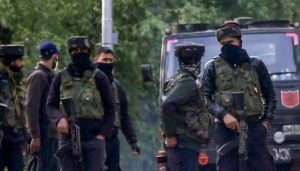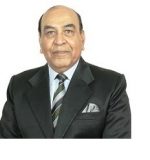The 9 PARA (SF) Setback Is Temporary : Bounceback Is Inevitable
- June 21, 2023
- Posted by: admin
- Category: India

By: Lt Gen Syed Ata Hasnain (Retd)
India’s Special Forces (SF) are its pride and the entire nation follows their actions and achievements with great interest. Hence the setback on May 5 in a recent operation in Rajouri’s Bhatta Durian Forest, where five brave hearts of 9 Para SF were killed in the line of duty, has obviously created a sense of dismay among those who closely monitor the activities of the Indian Army in the pursuit of its many operational responsibilities.
I am proud of the fact that I have operated in close cooperation with all three Para SF units that existed in the Indian Army in 1987-90 during Op Pawan in Sri Lanka. These were 1 Para SF, 9 Para SF and 10 Para SF; each one better than the other with excellence in all military parameters. There are many more Para SF units today but those who follow their achievements, challenges and setbacks have very little literature to fully understand how these iconic units function in operations, their great achievements and few setbacks. An odd failure is inevitable given the unpredictability of the challenges these units face.
It would be appropriate to describe a few operational aspects about Para SF units before analysing and commenting on the ongoing Operation Trinetra in the Bhatta Durian Forest. These units are considered strategic assets and to be employed for strategic gains in conventional operations. This simply means that their high value capability and standard of training must not be frittered away at the altar of temptation to achieve something quickly; that which could be achieved by any other unit too. However, there has been a raging debate within the Indian Army whether these units should be employed in counter proxy war operations which are of a hybrid nature, as against conventional. In Sri Lanka the then existing three units were employed as superimposed troops, to reinforce the capabilities of infantry units in the conduct of offensive counter insurgency and counter terrorism (CI/CT) operations. Superimposed essentially meant that a sub unit of the Para SF would be inducted into the operating bases of an infantry unit where the movement of militants was more frequent and the threats more pronounced. You would rarely find the entire unit being employed; only teams, troops or squads from a unit would be employed as superimposed troops with an Infantry operating base. Para SF troops could thus rely on the inherent security of an operating base, set up their logistics out of it, fall back there for rest and recuperation and many times operate jointly with the Infantrymen. Much would depend upon the relationships established and the standard of training of the Infantry troops. If the latter was high and mutual trust established the Para SF and the Infantry troops complemented each other superbly and their results were evident. Para SF sub units had to ensure a high degree of flexibility because they had to be ready to redeploy to other locations, many times by IAF helicopters at a few hours notice.
Many of the lessons learnt from Para SF operations in Operation Pawan were applied to Operation Rakshak in J&K and to Operation Hifazat in the North East. A Para SF unit dedicated to the latter was raised in 1990. The usefulness of employing Para SF as superimposed troops or in independent operations based upon special intelligence of a more reliable nature was borne out by many successes achieved in the last 34 years including the raid on terrorist camps in the vicinity of the Indo-Myanmar border in Jun 2015. In CI/CT operations in J&K or North East the level at which troop deployment is controlled is at the Corps HQ. The induction of Para SF sub units as an additional asset in a high intensity militant/terrorist infested zone can many times achieve out of proportion results which can swing the operational environment decidedly in our favour.
Many times, senior commanders keep Para SF troops ready for any operations which are proving to be difficult for regular troops to handle e.g., to tackle a major hideout or a camp which has been identified by intelligence sources. However, no one should perceive that Infantry and Rashtriya Rifles units have lower standards of training and capability. Para SF units are greatly dependent on these units for support and the best operation is usually a joint one with no egos in the way. We may recall the operation at the EKIC building complex in Pampore in which a long standoff took place. Two officers from 9 Para SF were killed in the line of duty while making the final entry for neutralizing the terrorist presence.
My unit (4 Garhwal Rifles – Jaswantgarh) operated with 10 Para SF’s Alpha Team on almost continuous basis for over a year in Sri Lanka. We had such a high degree of mutual trust that we could rely on each other to watch our backs and respond to negative situations immediately without awaiting orders from respective higher commanders. 9 SF, currently deployed in Operation Trinetra, operated jointly with 4 Garh Rif in the Wani jungles of Sri Lanka in a massive operation called Op Shamsheer in Mar 1989. So impressed were the ranks of 9 Para SF with the Garhwali boys that a request was made to us to allow some volunteers to join their unit. We supported that appreciation by allowing several good soldiers from our unit to become Para SF men.
The events in the Rajouri-Poonch area have a history, without the understanding of which readers will not be able to comprehend the degree of difficulty and the serious challenge. This is the area between the LoC in the west/south and the Pir Panjal range in the north/east. There is low mountainous ground in the vicinity of most of the LoC but climbs rapidly to the higher reaches of Pir Panjal through terrain which has cliffs, rocky outcrops and densely wooded forests; all ideal for establishing well camouflaged hideouts. This area once had a raging militancy/terror which by 2010 got neutralized with the employment of the Rashtriya Rifles (RR), regular formations and units brought from the East and reserves of Northern Command. Attempts to revive this were made ever since 2013 by when only the Northern Command reserves and deployed units were left to operate. Its an area where if infiltration is successful an operation could be launched by terrorists very quickly, quite unlike the Kashmir Valley where the Indian Army deployment was more foreboding. In 2003 the Army had demonstrated how the hideouts at the higher reaches had to be tackled through Operation Sarp Vinash. 54 terrorists were reported killed as a result of the operation.


With operations in the Kashmir Valley becoming more difficult, the exponents of proxy war decided to attempt high profile strikes in the Rajouri Poonch area. Not more than 10-15 terrorists have been involved in smaller groups and a surrogate sub-group of the Jaish e Mohammad (JeM) has staked its claim for having executed these. They struck in Nov 2021 killing in action seven RR soldiers and targeted members of the minority community at Rajouri in the beginning of 2023. There is another version about an LeT hand behind the recent terrorist actions against the truck of the RR and the contact between Para SF and the holed up terrorists in Bhatta Durian forest. Traditionally while approaching a hideout or in Search and Destroy operations in the jungles the search has to progress very slowly because the troops, however well trained, will be at disadvantage because they are on the move and the terrorists are static. It’s a painstaking, often frustrating experience to conduct SADO in jungles. It’s like searching for a needle in a 150 kilometres front in forested terrain.
The public must have no misgivings about elite troops of the Indian Army. Take it from me. I have had many different units serve under and with me but I still count Para SF units a class apart. 9 Para had several casualties in Operation Pawan too but that never got it down. None will get it down here too. The wiping out of the Bhatta Durian terrorist group is inevitable; it may take just a little more time.


Lt Gen Syed Ata Hasnain (Retd)
AUTHOR
Lt Gen Syed Ata Hasnain (Retd), PVSM, UYSM, AVSM, SM, VSM* former Commander of Indian Army’s Srinagar Corps, focuses on trans-national and internal conflicts in Asia and the Middle East with particular emphasis on issues revolving around radical Islam. He is the Chancellor of Central University of Kashmir and speaks extensively at Indian and international institutions on a wide variety of subjects revolving around strategic affairs and leadership. He is presently a Member of the National Disaster Management Authority (NDMA).
